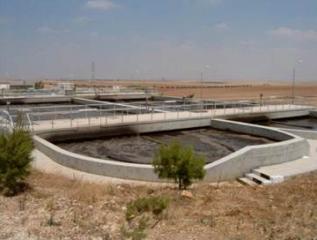A need for design approaches was adjusted to cope with high and low temperatures
Despite various investigations into the impact of temperature on biological wastewater treatment processes, design recommendations adjusted to cope with activated sludge systems in the high temperature range are so far lacking, with the result that, to a very great extent, it was necessary to have recourse to design recommendations for the medium temperature range (e.g. DWA-A 131 and the former ATV-DVWK-A 131 respective) or to extrapolate the latter.
Extension of the design rules
The aim of the "activated sludge systems" Subgroup was to elaborate an activated sludge system design approach - validated by application to large-scale plants - that is both simple to use and that delivers sound recommendations, applicable to variable boundary conditions, for the dimensioning and operation of actual plants. To this end, design specification approaches and optimization recommendations elaborated in an earlier project were perfected and validated by application to pilot or industrial-scale activated sludge systems. Here, the focus was the impact of temperature and salt content.
Tests on industrial-scale plants
For this purpose, treatment plants in various climatic regions were being examined by means of volumetric analysis. The aim was to validate the precision of the existing design approaches, especially in the course of the various seasons and while observing differences in wastewater composition, temperature and salt content, and to propose scientifically-substantiated improvements.
Investigation sites:
Industrial-scale tests were carried out in the UAE. Amongst others, additinal data were included from plants in Sweden, Spain, Turkey and China.
Operating sequences:
- Collection of readings: Readings were taken on a selection of actual plants by means of intensive measuring campaigns with the assistance of on-line sensors in combination with a telemetry service for teletransmission of the data. Readings already available from pertinent activated sludge plants were processed for further evaluation.
- Mathematical simulation: The readings taken from the actual plants were simulated using a calibrated ASM3 activated sludge process model. Critical load situations were identified on the basis of scenario calculations so as to enable safety margins to be estimated on this basis. Further tests involving plant monitoring based on 24-hour or 2-hour mean values were carried out to ascertain what adjustments have been made to the design algorithm.
- Validation of the design approach: The design rules and optimization recommendations thus developed were validated using the data acquired from the actual plants. The parameters were validated are the minimum aerobic sludge age, excess sludge production, oxygen demand, COD and N degradation rates, and denitrification performance. The DWA-A 131 design limits in respect of temperature and salt content have been ascertained.
- Implementation in practice: The design approach was checked for practicability and they have been made adjustments. Planning aspects and recommendations regarding the input of the design results into basic engineering documents were elaborated.
Project partners:
Ruhr-Universität Bochum,
Lehrstuhl für Siedlungswasserwirtschaft und Umwelttechnik
Universitätsstr. 150, 44801 Bochum
www.siwawi.ruhr-uni-bochum.de/
Persons to contact:
Prof. Dr.-Ing. Marc Wichern, marc.wichern@rub.de
Dipl.-Ing. Daniel Herzer, daniel.herzer@rub.de
Emscher Wassertechnik GmbH
Brunnenstr. 37, 45128 Essen
www.ewlw.de
Persons to contact:
Prof. Dr.-Ing. Holger Scheer, scheer@ewlw.de
Dipl.-Ing. Peter Wulf, wulf@ewlw.de
Hach-Lange GmbH
Willstätterstr. 11, 40549 Düsseldorf
www.hach-lange.de
Person to contact:
Danny Jung, danny.jung@hach-lange.de






